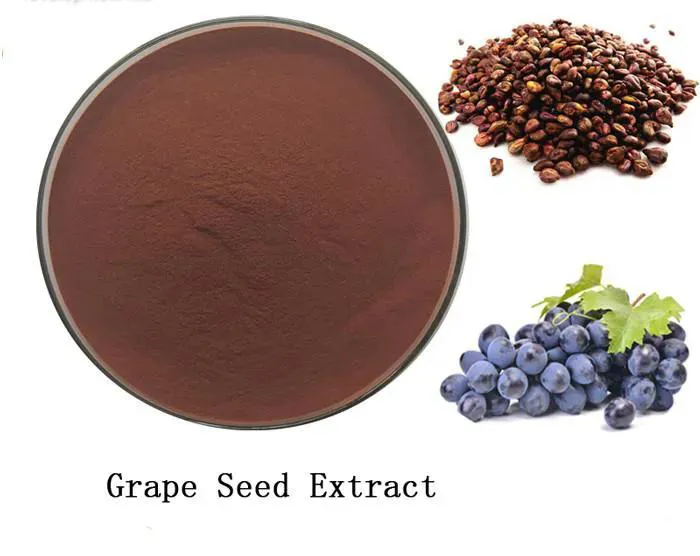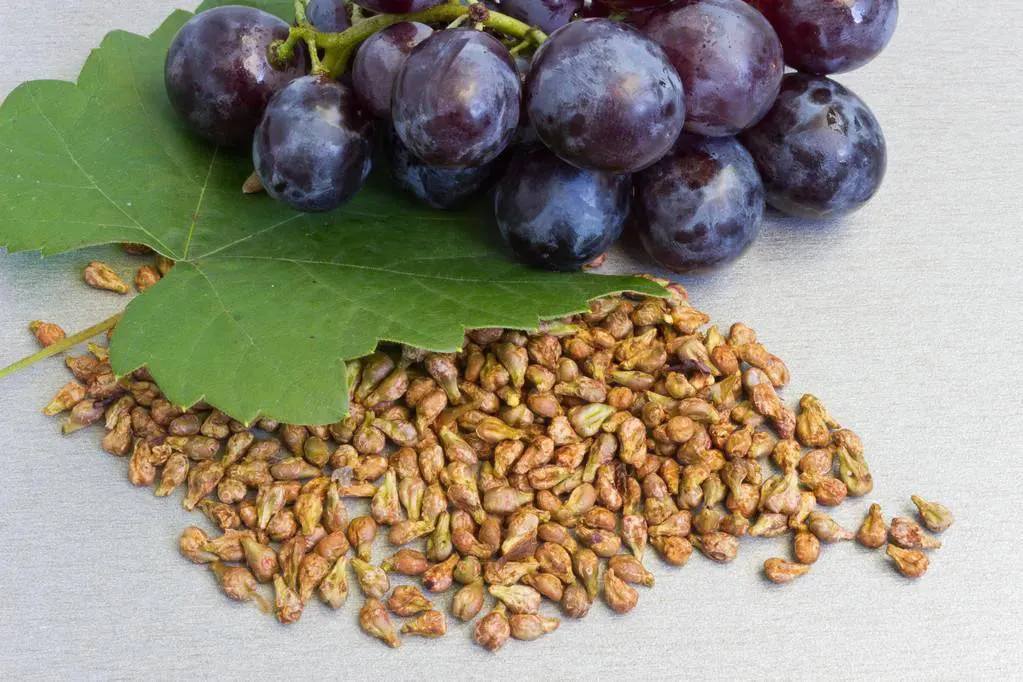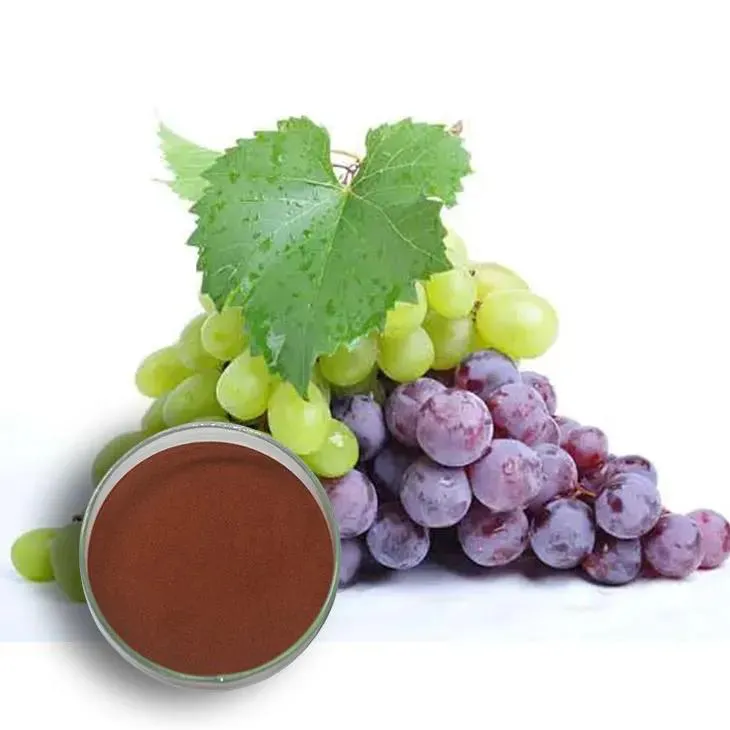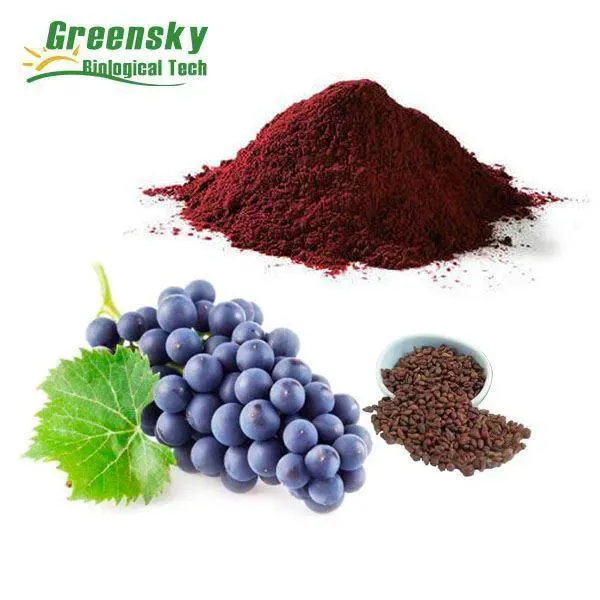- 0086-571-85302990
- sales@greenskybio.com
Innovating for the Future: Emerging Trends in Grape Seed Extract Production
2024-07-26

1. Introduction
Grape Seed Extract has gained significant popularity in recent years due to its numerous health benefits. It is rich in antioxidants, such as proanthocyanidins, which have been associated with various positive effects on human health, including reducing oxidative stress, improving cardiovascular health, and having anti - inflammatory properties. As the demand for Grape Seed Extract continues to grow, the production process is undergoing a series of innovative changes. This article will explore the emerging trends in Grape Seed Extract production, focusing on advanced extraction techniques, sustainable sourcing, and technological integrations for quality control.

2. Advanced Extraction Techniques
2.1 Supercritical Fluid Extraction
Supercritical fluid extraction (SFE) is one of the most promising advanced extraction techniques in grape seed extract production. SFE uses a supercritical fluid, typically carbon dioxide (CO₂), as the solvent. The supercritical state of CO₂ occurs when it is above its critical temperature and pressure. In this state, CO₂ has properties that are intermediate between a gas and a liquid, which makes it an excellent solvent for extracting bioactive compounds from grape seeds.
One of the major advantages of SFE is its ability to produce extracts with higher purity and potency. Since CO₂ is a relatively inert gas, it does not react with the bioactive compounds in grape seeds, thus preserving their chemical integrity. Moreover, the extraction process can be precisely controlled by adjusting the temperature, pressure, and flow rate of CO₂. This allows for the selective extraction of specific compounds, such as proanthocyanidins, while minimizing the extraction of unwanted substances.
Another benefit of SFE is its environmental friendliness. CO₂ is a non - toxic, non - flammable, and easily recoverable solvent. After the extraction process, CO₂ can be easily separated from the extract and recycled, reducing the environmental impact associated with traditional solvent - based extraction methods.
2.2 Subcritical Water Extraction
Subcritical water extraction (SWE) is another emerging technique in grape seed extract production. SWE uses water at a temperature and pressure below its critical point (subcritical conditions) to extract bioactive compounds from grape seeds. Under subcritical conditions, water has unique properties that make it a good solvent for polar and non - polar compounds.
The main advantage of SWE is its ability to extract a wide range of bioactive compounds from grape seeds without the use of organic solvents. This not only reduces the cost associated with purchasing and disposing of organic solvents but also makes the extract more suitable for applications in the food and pharmaceutical industries, where the presence of organic solvents may be restricted. Additionally, SWE can be carried out at relatively mild conditions, which helps to preserve the bioactivity of the extracted compounds.
2.3 Enzyme - Assisted Extraction
Enzyme - assisted extraction (EAE) is an innovative approach that involves the use of enzymes to break down the cell walls of grape seeds, thereby facilitating the extraction of bioactive compounds. Enzymes such as cellulases, hemicellulases, and pectinases can be used in EAE.
EAE offers several benefits. Firstly, it can significantly increase the extraction yield of bioactive compounds from grape seeds. By breaking down the cell walls, enzymes allow for better access to the intracellular components, resulting in a more efficient extraction process. Secondly, EAE can be carried out under mild conditions, which helps to preserve the quality and bioactivity of the extracted compounds. Finally, EAE is a relatively environmentally friendly extraction method, as the enzymes are biodegradable.

3. Sustainable Sourcing of Grape Seeds
3.1 Organic Grape Sourcing
As the demand for grape seed extract grows, there is an increasing emphasis on sustainable sourcing. Organic grape sourcing is one of the key trends in this regard. Organic grapes are grown without the use of synthetic pesticides, fertilizers, and genetically modified organisms (GMOs). This not only ensures a cleaner and more natural source of grape seeds but also has positive environmental and health implications.
By sourcing organic grapes, producers can reduce the exposure of grape seeds to harmful chemicals, which may be present in conventionally grown grapes. This is particularly important for the production of high - quality grape seed extract, as the presence of chemical residues in the seeds can affect the purity and safety of the extract. Moreover, organic farming practices are generally more sustainable, as they promote soil health, biodiversity, and water conservation.
However, organic grape sourcing also presents some challenges. Organic grapes may have lower yields compared to conventionally grown grapes, which can lead to higher production costs. Additionally, ensuring a consistent supply of organic grapes can be difficult, especially for large - scale production of grape seed extract.
3.2 By - Product Utilization
Another trend in sustainable sourcing of grape seeds is by - product utilization. Grape seeds are a by - product of the wine and grape juice industries. Instead of discarding these seeds, they can be collected and used for the production of grape seed extract.
This approach has several advantages. Firstly, it reduces waste in the wine and grape juice industries, contributing to a more sustainable production cycle. Secondly, it provides a cost - effective source of grape seeds for extract production. Since the seeds are a by - product, their acquisition cost is relatively low compared to growing grapes specifically for seed extraction. However, it is important to ensure that the grape seeds obtained from the by - product are of high quality and free from contaminants, such as pesticides and heavy metals.
3.3 Local Sourcing
Local sourcing of grape seeds is also emerging as a sustainable trend in grape seed extract production. By sourcing grape seeds locally, producers can reduce the carbon footprint associated with transportation. Additionally, local sourcing can support local farmers and economies, and it can also ensure a fresher supply of grape seeds.
However, local sourcing may be limited by the availability of suitable grape varieties in a particular region. In some cases, producers may need to import grape seeds from other regions to meet the specific requirements for grape seed extract production, such as the presence of certain bioactive compounds in specific grape varieties.

4. Technological Integrations for Quality Control
4.1 High - Performance Liquid Chromatography (HPLC)
High - performance liquid chromatography (HPLC) is a powerful analytical technique that is widely used in the quality control of grape seed extract production. HPLC can separate, identify, and quantify the bioactive compounds in grape seed extract, such as proanthocyanidins, flavonoids, and phenolic acids.
By using HPLC, producers can ensure that their grape seed extract meets the required quality standards. For example, they can monitor the concentration of specific bioactive compounds in the extract, ensuring that it contains the desired amount of health - promoting substances. HPLC can also be used to detect impurities and contaminants in the extract, such as pesticides, heavy metals, and residual solvents, thereby ensuring the safety and purity of the product.
4.2 Near - Infrared Spectroscopy (NIRS)
Near - infrared spectroscopy (NIRS) is another important technological integration in grape seed extract production for quality control. NIRS is a non - destructive analytical technique that can be used to analyze the chemical composition of grape seeds and grape seed extract.
NIRS works by measuring the absorption of near - infrared light by the sample. Different chemical compounds in the sample absorb different wavelengths of light, allowing for the identification and quantification of these compounds. NIRS has several advantages over traditional analytical techniques, such as HPLC. It is faster, non - destructive, and requires less sample preparation. This makes it a suitable technique for online quality control in the production process, allowing for real - time monitoring of the quality of grape seed extract.
4.3 Quality Management Systems (QMS)
Quality management systems (QMS) play a crucial role in ensuring the quality of grape seed extract production. A QMS is a set of policies, procedures, and practices that are designed to ensure that a product meets the required quality standards. In the context of grape seed extract production, a QMS can cover various aspects, such as raw material sourcing, production processes, quality control, and product packaging.
By implementing a QMS, producers can ensure consistency in the quality of their grape seed extract. They can also identify and address potential quality issues at an early stage, reducing the risk of producing sub - standard products. Some of the common elements of a QMS in grape seed extract production include Good Manufacturing Practice (GMP), Hazard Analysis and Critical Control Points (HACCP), and Standard Operating Procedures (SOPs).

5. Conclusion
The emerging trends in grape seed extract production, including advanced extraction techniques, sustainable sourcing, and technological integrations for quality control, are revolutionizing the industry. These trends are not only enabling producers to meet the growing demand for grape seed extract but also ensuring that the product is of high quality, safe, and sustainable.
Advanced extraction techniques such as supercritical fluid extraction, subcritical water extraction, and enzyme - assisted extraction are allowing for the production of grape seed extract with higher purity and potency. Sustainable sourcing practices, such as organic grape sourcing, by - product utilization, and local sourcing, are reducing the environmental impact of production and ensuring a reliable supply of raw materials. Technological integrations for quality control, such as HPLC, NIRS, and quality management systems, are ensuring that the final product meets the required quality and safety standards.
As the market for grape seed extract continues to expand, it is expected that these trends will continue to evolve and drive further innovation in the production process. Producers who are able to adapt to these trends will be well - positioned to succeed in this competitive and growing market.
FAQ:
What are the advanced extraction techniques in grape seed extract production?
Some advanced extraction techniques include supercritical fluid extraction. This method uses a supercritical fluid, often carbon dioxide, which has properties between those of a gas and a liquid at specific conditions. It can selectively extract the active compounds from grape seeds with high efficiency and minimal solvent residue, ensuring higher purity and potency of the grape seed extract. Another technique is microwave - assisted extraction, which uses microwave energy to accelerate the extraction process, reducing the extraction time while maintaining or even enhancing the quality of the extract.
How is sustainable sourcing of grape seeds achieved in the production of grape seed extract?
Sustainable sourcing of grape seeds can be achieved in several ways. One approach is to collaborate directly with vineyards. The vineyards can be encouraged to use more environmentally friendly farming practices, such as organic farming methods. This not only ensures the quality of the grape seeds but also reduces the environmental impact. Additionally, waste grape seeds from the wine - making industry can be efficiently collected and utilized. By establishing a proper collection network, these seeds, which would otherwise be discarded, can be turned into valuable grape seed extract, thus making full use of resources and reducing waste.
What role does technological integration play in the quality control of grape seed extract production?
Technological integration plays a crucial role in quality control. For example, advanced spectroscopic techniques like infrared spectroscopy and high - performance liquid chromatography (HPLC) can be integrated into the production process. Infrared spectroscopy can quickly analyze the chemical composition of the extract, providing information about the presence and concentration of key active ingredients. HPLC, on the other hand, can separate and quantify the individual components with high precision. Automated monitoring systems can also be used to continuously monitor various parameters during the production process, such as temperature, pressure, and extraction time, ensuring that each batch of grape seed extract meets the required quality standards.
Why is higher purity and potency important in grape seed extract production?
Higher purity and potency are important for several reasons. Firstly, in the field of nutraceuticals and dietary supplements, consumers expect products with high - quality and effective ingredients. Grape seed extract with high purity and potency is more likely to deliver the promised health benefits, such as antioxidant, anti - inflammatory, and cardiovascular protection effects. Secondly, in the pharmaceutical industry, if grape seed extract is used in drug development or as an active pharmaceutical ingredient, high purity and potency are essential for ensuring the safety and efficacy of the final product. Moreover, from a commercial perspective, products with higher purity and potency are more competitive in the market.
How are emerging trends in grape seed extract production likely to impact the market?
The emerging trends are likely to have a significant impact on the market. The use of advanced extraction techniques ensuring higher purity and potency will attract more consumers who are seeking high - quality products. This can lead to an increase in market demand. Sustainable sourcing of grape seeds can also enhance the market image of grape seed extract products, appealing to environmentally conscious consumers. Technological integrations for enhanced quality control can improve the overall product quality and consistency, which is crucial for building consumer trust. As a result, the market share of grape seed extract products is likely to expand, and the industry may experience growth both in terms of volume and value.
Related literature
- Advances in Grape Seed Extract Production: A Review"
- "Sustainable Sourcing in the Grape Seed Extract Industry: Current Practices and Future Prospects"
- "Technological Innovations in Quality Control of Grape Seed Extract Manufacturing"
- ▶ Hesperidin
- ▶ citrus bioflavonoids
- ▶ plant extract
- ▶ lycopene
- ▶ Diosmin
- ▶ Grape seed extract
- ▶ Sea buckthorn Juice Powder
- ▶ Beetroot powder
- ▶ Hops Extract
- ▶ Artichoke Extract
- ▶ Reishi mushroom extract
- ▶ Astaxanthin
- ▶ Green Tea Extract
- ▶ Curcumin Extract
- ▶ Horse Chestnut Extract
- ▶ Other Problems
- ▶ Boswellia Serrata Extract
- ▶ Resveratrol Extract
- ▶ Marigold Extract
- ▶ Grape Leaf Extract
- ▶ blog3
- ▶ blog4
- ▶ blog5
-
Apricot Powder
2024-07-26
-
Andrographis Paniculata Extract Powder
2024-07-26
-
Bayberry Extract
2024-07-26
-
Hawthorn Extract
2024-07-26
-
Red Vine Extract
2024-07-26
-
Peppermint Extract Powder
2024-07-26
-
Angelica sinensis extract
2024-07-26
-
Grape Seed Extract
2024-07-26
-
Hedyotis Diffusa Extract
2024-07-26
-
Red Date Extract
2024-07-26




















